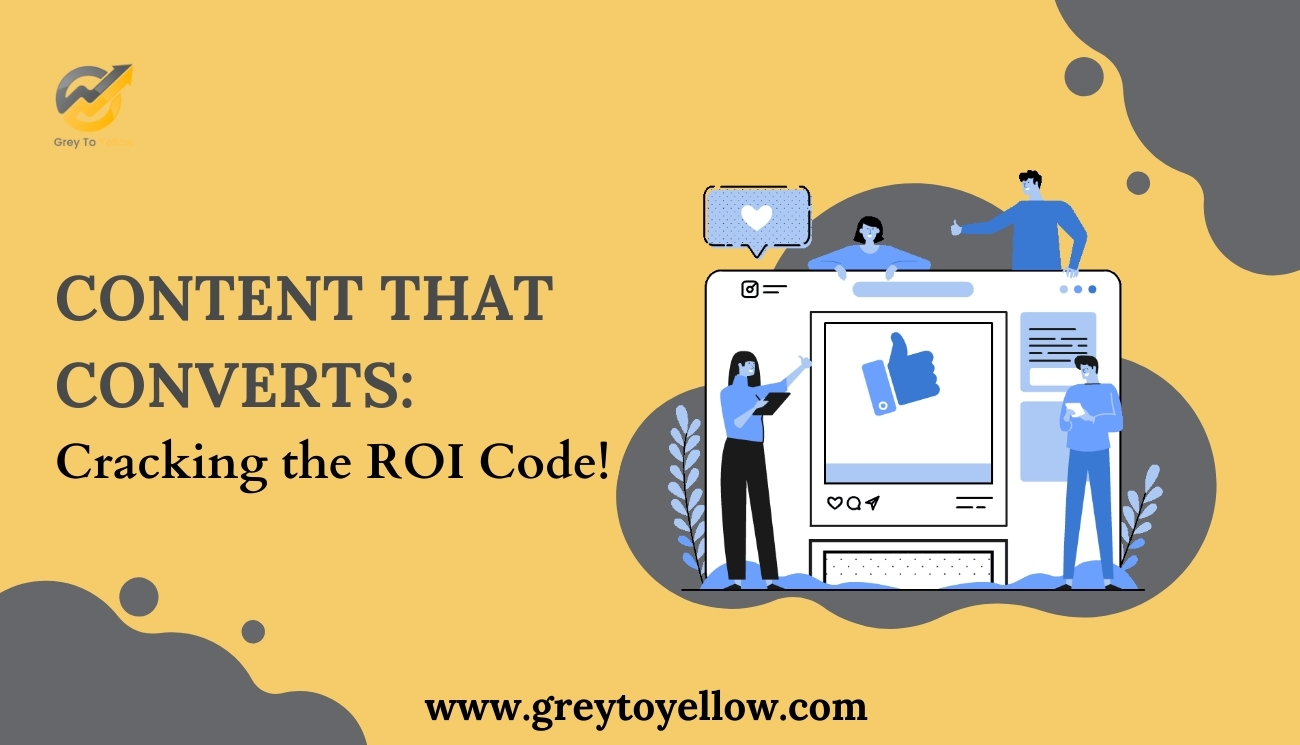
Content that Converts: Cracking the ROI Code in Content Marketing
Creating content that converts and is compelling is a cornerstone of every digital marketing agency. But beyond the engagement in the form of likes and shares, how do we truly measure the impact of our content marketing efforts? Is that blog post you spent hours crafting actually generating any return on investment (ROI)?
While fancy dashboards might seem like the ultimate answer, a simple formula can surprisingly shed light on your content’s true power:
ROI = (Return – Investment) / Investment * 10
Let’s get real. Let’s say that you spent $1,000 on a blog post that exploded in popularity, driving sales up to a whopping $3,000. Congratulations! This means that you have reached a stellar 200% ROI, meaning that one piece of content paid for itself twice over.
Wait. This is not where the party stops. Not all returns are measured in dollars or cents. Content marketing can also yield valuable returns in the form of:
- Brand awareness: Your content positions you as a thought leader and industry expert, making potential customers more receptive to your brand.
- Customer loyalty: Engaging content fosters trust and connection, turning one-time buyers into loyal fans who rave about your products or services.
- Brand advocacy: Happy customers become your biggest cheerleaders, singing your praises online and influencing others through word-of-mouth marketing.
So, the million-dollar question becomes: how do you measure a good content marketing ROI? The answer, like most things in life, is: it depends.
Tailoring Your Content Measurement to Your Goals
The key to measuring ROI lies in aligning your content strategy with your specific marketing goals. Here’s a breakdown of some common goals and their corresponding metrics:
- Generating leads: If you’re aiming to capture leads and build your email list, track downloads of gated content (e-books, white papers, etc.), sign-ups for free trials or demos, and website form submissions. These metrics indicate how effectively your content is attracting potential customers and moving them further down the sales funnel.
- Boosting sales: For e-commerce businesses, content that directly influences sales is king. Track website traffic coming from your content (through UTM parameters), coupon code redemptions triggered by content, and even direct sales figures if your content includes clear calls to action.
- Building a community: If fostering brand loyalty and engagement is your priority, focus on social media metrics like shares, comments, and mentions. Track how your content sparks conversations, increases brand awareness, and positions you as a trusted resource within your industry.
The Magic of Storytelling: Numbers with a Narrative
Remember, content marketing isn’t just about chasing numbers. It’s about weaving a compelling narrative that resonates with your audience. The best ROI stories go beyond raw data, showcasing how your content:
- Connects with your target audience: Demonstrate how your content addresses your audience’s pain points, interests, and needs. Share real-life examples of how your content has helped people achieve their goals.
- Drives engagement: Highlight how your content sparks conversations and interactions. Showcase positive comments, testimonials, and social media mentions that illustrate the power of your content in connecting with your audience.
- Contributes to your business goals: Ultimately, tie it all back to your bottom line. Whether it’s increased leads, brand awareness, or sales figures, demonstrate how your content marketing strategy contributes to the overall success of your business.
By combining data analysis with a captivating narrative, you can showcase the true value of your content marketing efforts. So, don’t be afraid to get creative!
